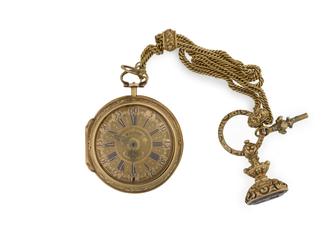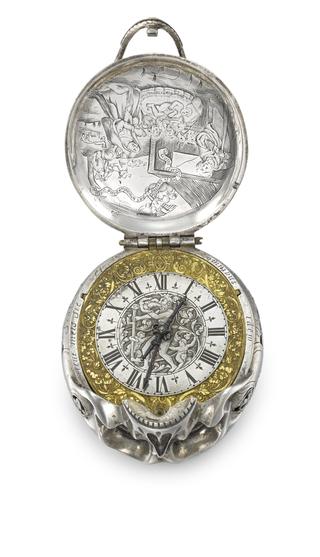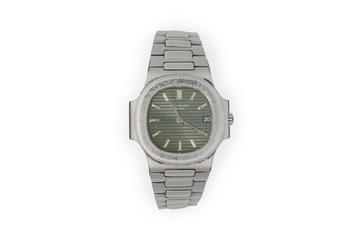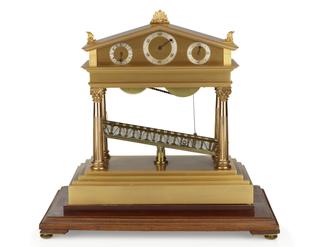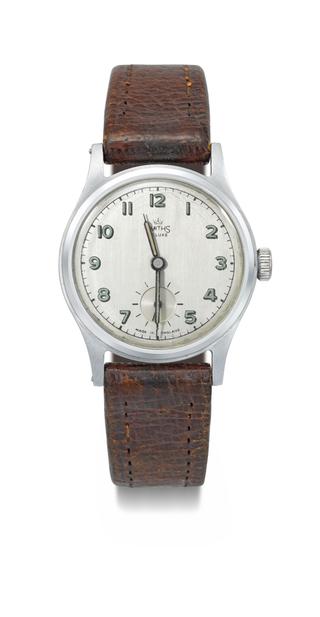






Striking table clock in a French case, movement by Henry Archer, London c.1615. Circular canister case, brass-gilt with pierced and engraved dome top surmounted by a horizontal dial with a plain silver chapter ring. The centre of the dial is gilt and engraved. Single steel hand. The lower, drum-shaped portion of the clock is engraved with hunting scenes and contains two doors, one to inspect the fusee and the other the striking train. The pierced dome which covers the bell is engraved with eight lion-like masks. The case stands on three bun feet. The movement is brass except for the balance-wheel which is later and has had a balance-spring and regulator added. Bell mounted to the top. Verge escapement. Pinned-on balance cock of simple s-shape design. Early type of long fusee with a chain which is a replacement of the original gut. The striking train has a going barrel; the fly is missing. Back plate with an engraved border and signed 'Henry Archer'. Clockmakers' Museum No. 584
The case of this clock was probably imported from France and, as it has two inspection doors, was intended to be fitted with a movement possessing two fusees, but Archer evidently decided on a going barrel for the strike side and no alarm. Henry Archer was a 'Clockmaker Citizen' in London in 1622 and in that year signed with fifteen others a petition to the Crown asking for protection against bad workmanship. In 1632 his name appears in the Charter of the Clockmakers' Company as an original Warden and later that year he was appointed Deputy Master while the Master, David Ramsay, was out of the country.
Details
- Category:
- Clockmakers
- Collection:
- The Worshipful Company of Clockmakers
- Object Number:
- L2015-3465
- type:
- spring-driven clock and balance escapement
- credit:
- Lent by the Worshipful Company of Clockmakers

